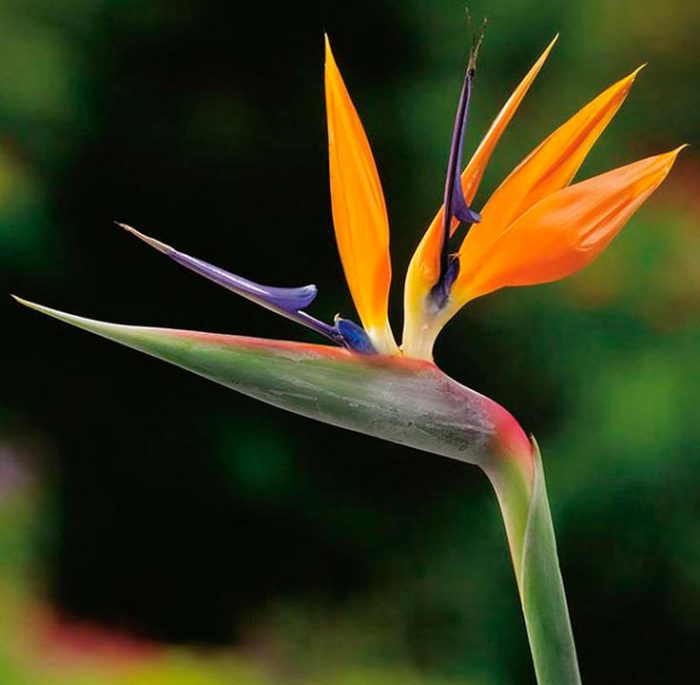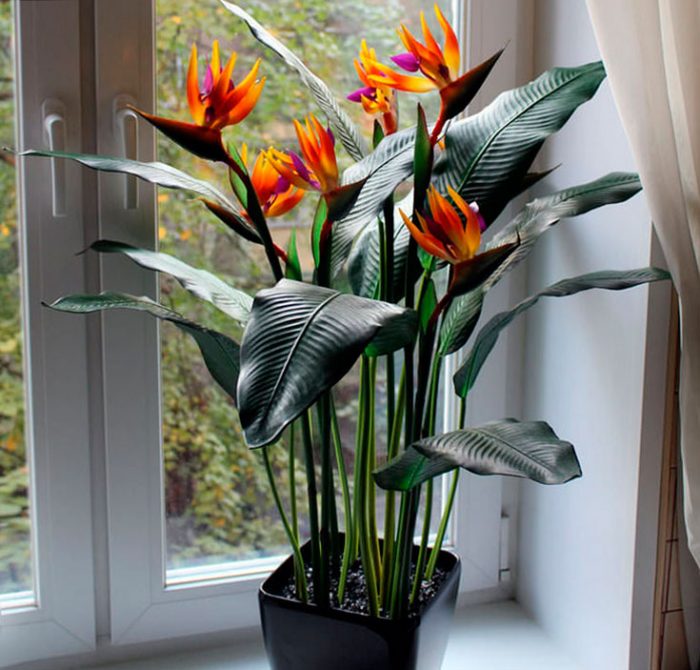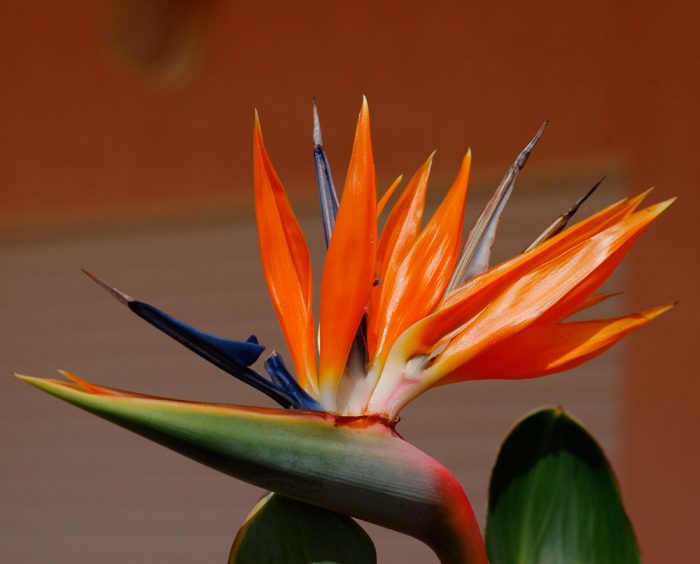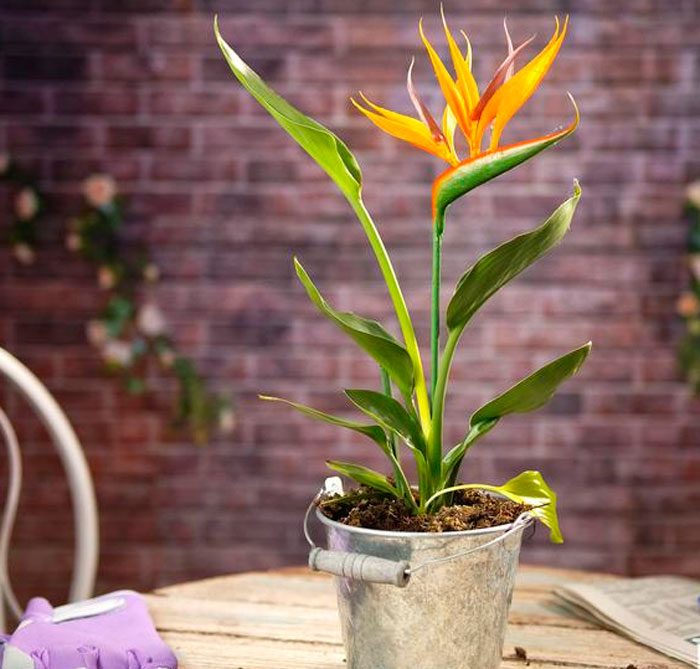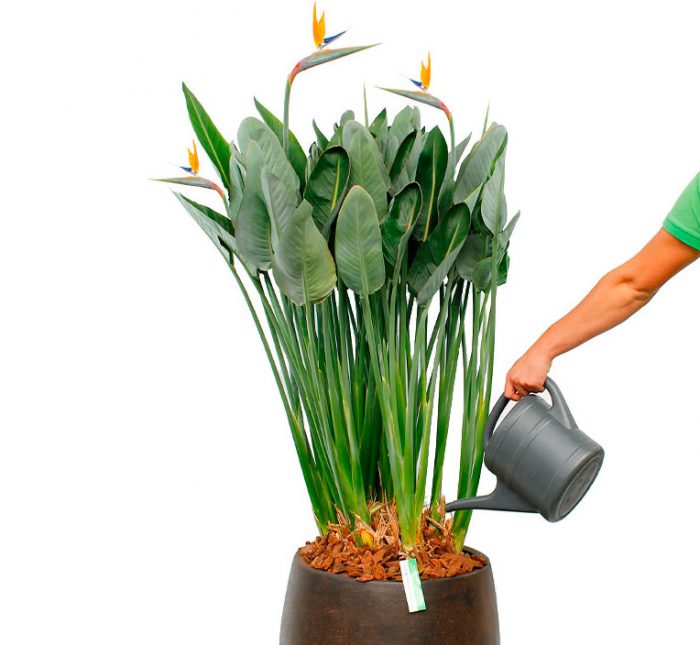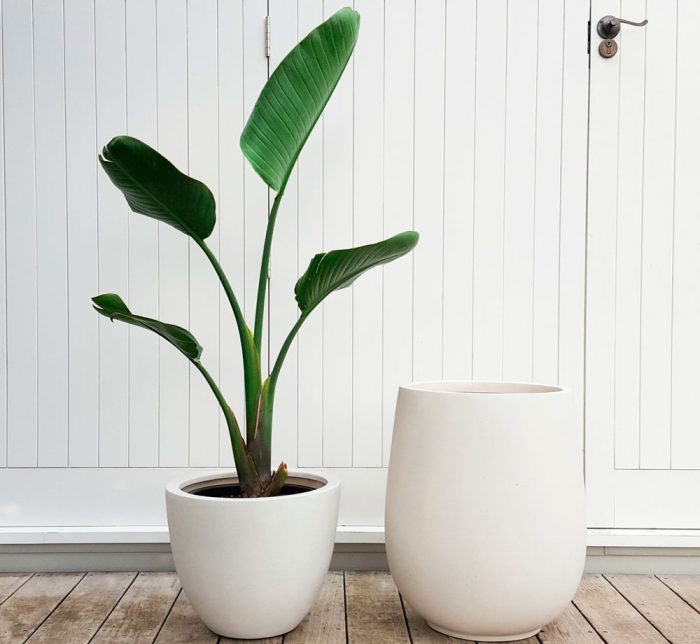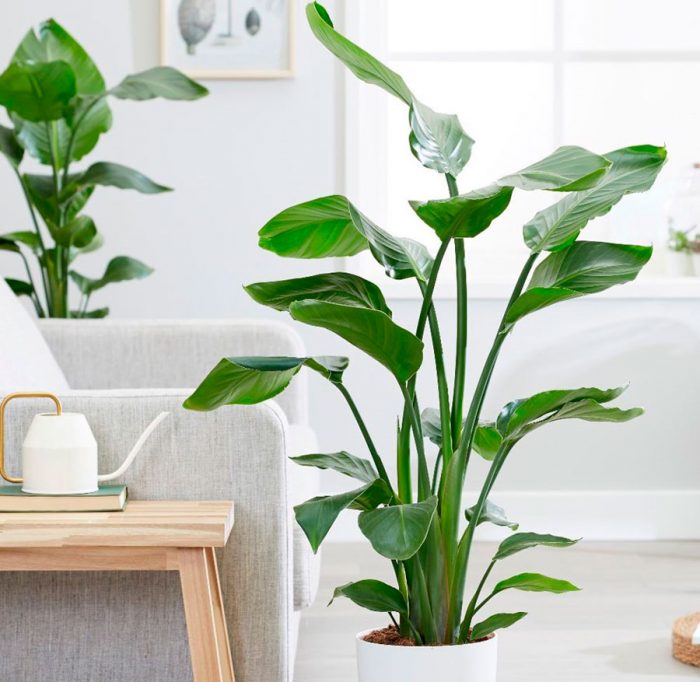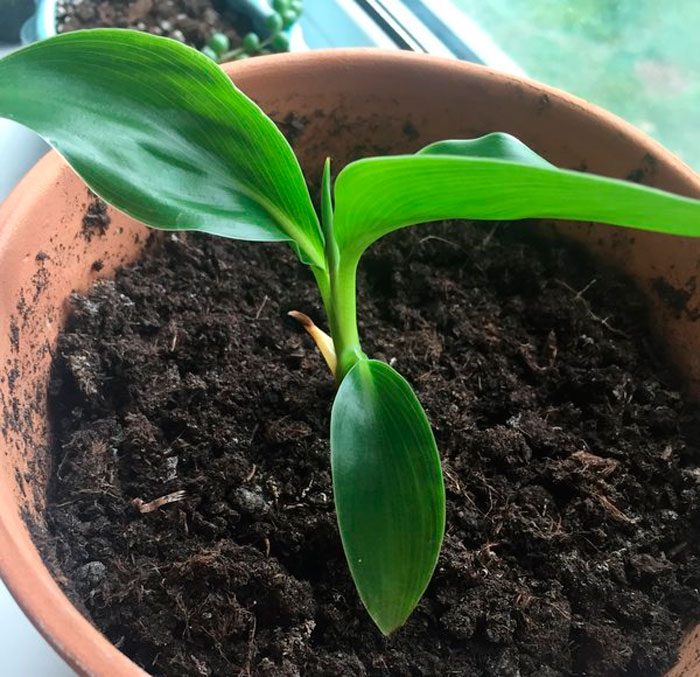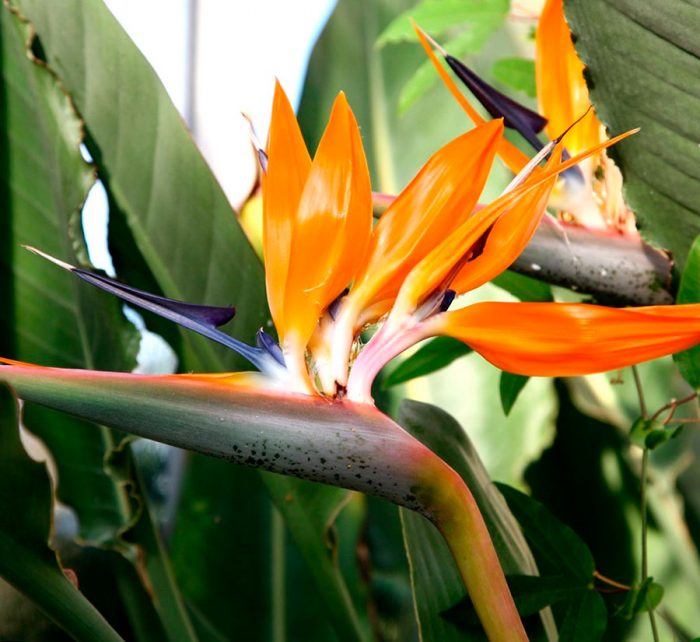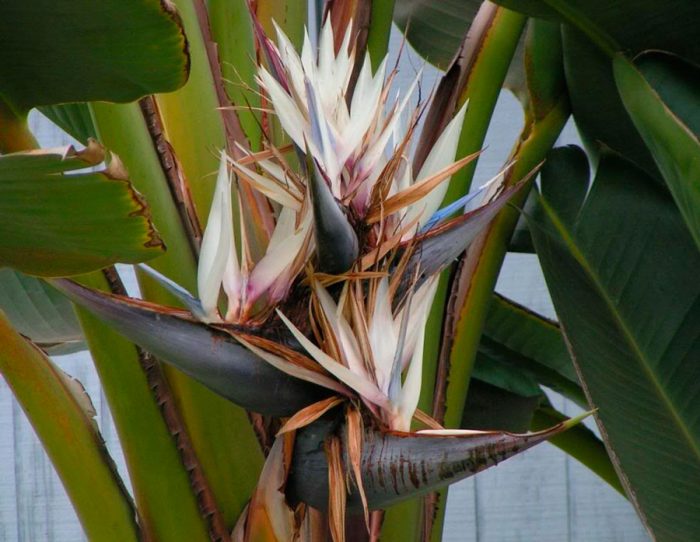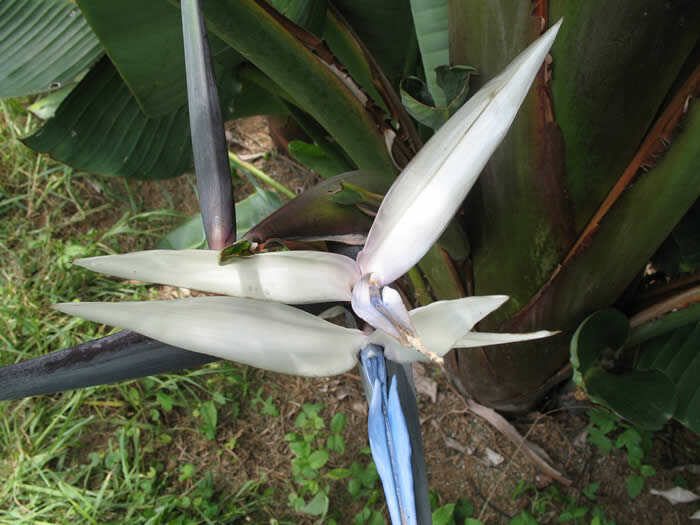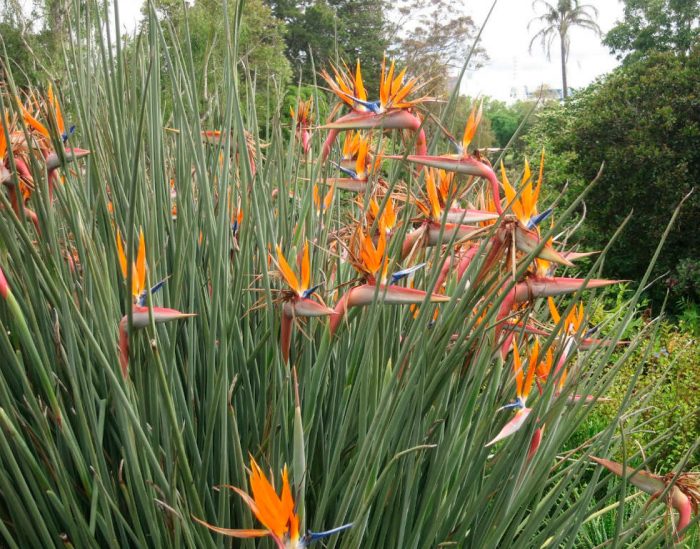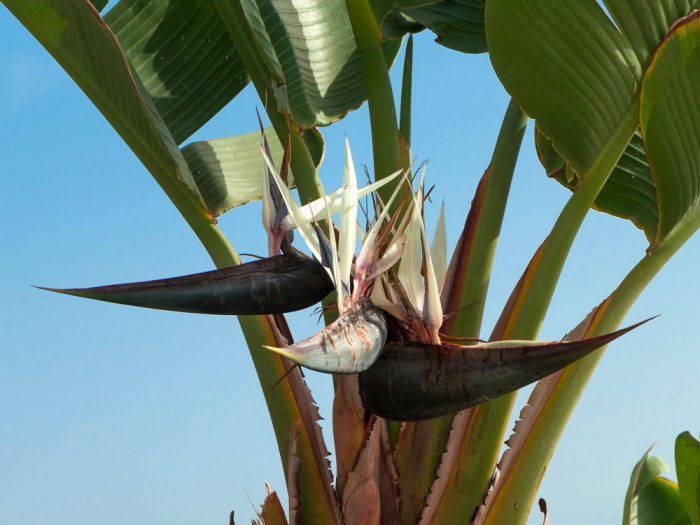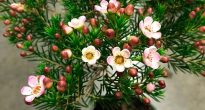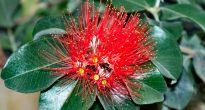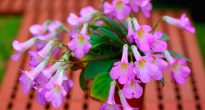The Strelitzia plant, also called Strelitzia, is a type genus of the Strelitziaceae family. This genus unites 4 species that are naturally found in Madagascar and South Africa. This plant got its name in honor of the wife of King George III, Queen of Great Britain, Charlotte-Sophia Mecklenburg-Strelitz. At the same time, one of the species was named the royal strelitzia, and the other - the strelitzia of Nicholas in honor of the autocrat of the all-Russian Nicholas I. In the people, this plant is called "bird of paradise", this name is associated with the unusually beautiful flowers of this plant.
Content
Brief description of cultivation
- Bloom... In spring time for 6 weeks.
- Illumination... A diffused but bright light is needed, so it is best to choose an east or west windowsill.
- Temperature regime... During vigorous growth, the plant does well at normal room temperature. In winter, the room should be colder than 14 degrees.
- Watering... During the growing season, water should be often, but in moderation, while the soil mixture in the pot should be slightly damp all the time. In winter, watering is carried out approximately once every 1.5 weeks.
- Air humidity... It should be elevated. On hot days, spray on the foliage with a spray bottle.
- Fertilizer... During the growing season and during flowering, the bush is fed regularly 1 time per 10 days, for this, mineral fertilizers and organic matter are alternately used.
- Rest periodI am. Conditional, in winter.
- Transfer... While the bush is young, it is transplanted once a year, and more mature plants - once every 3 or 4 years.
- Reproduction... Seeds (must be freshly harvested), side shoots and parts of those bushes that are already 6 or 7 years old.
- Harmful insects... Scabbards, mealybugs, aphids and spider mites.
- Diseases... This plant is highly resistant to disease. However, due to the regular waterlogging of the soil mixture in the pot, the root system can rot.
Strelitzia features
Under natural conditions, strelitzia is a herbaceous evergreen perennial plant.The height of the largest specimens in the wild can reach more than 10 m, and the average size of the bushes is 2–3.5 m. The core system of roots extends into the deep layers of the soil. Large oval green leaf plates, leathery to the touch, have a bluish-gray bloom on the surface. The leaves can be up to 0.1–0.8 m wide and 0.3–2 m long, outwardly they are very similar to banana foliage, but their petioles are longer - 0.5–0.9 m. the peduncle is a horizontal inflorescence, which outwardly resembles the tuft of a fancy bird, it consists of purple or orange flowers, which reach 10–20 centimeters across. One peduncle can have 5-7 flowers, while on one bush 6 peduncles and even more are formed, in this regard, the plant can bloom up to 6 months.
If you take good care of your home strelitzia, it will delight you with its long lush flowering several times a year. In the cut, the flowers of this plant stand for a relatively long time - from 15 to 30 days.
Home care for strelitzia
Illumination
It is quite simple to grow strelitzia at home, since it is distinguished by its unpretentiousness and undemanding care. Since it grows best under bright diffused lighting, it is recommended to put it on the west or east window. Avoid direct sunlight on the bush.
Temperature regime
This plant is thermophilic, but during the dormant period in winter, it should be kept cool (no higher than 14 degrees). At other times of the year, it grows well and develops at a temperature typical for residential premises. In the warm season, if possible, it is recommended to move the strelitzia to the street (to the garden or to the balcony), but you should choose a place for it that will be reliably protected from gusts of wind and direct sunlight.
Watering
During the spring and summer period, watering should be moderate but frequent. Make sure that the earthen mixture in the container is slightly moistened at all times. But do not overdo it with watering, as the systematic stagnation of fluid in the root system can harm the plant. In winter, watering is carried out approximately once every 10 days. For irrigation, you should use filtered or well-settled water, the temperature of which is close to room temperature.
Air humidity
In indoor conditions, such a plant needs a little high humidity. In this regard, on hot days, the leaf plates must be wiped off with a damp sponge or sprayed from a spray bottle.
Top dressing
Home strelitzia is fed during flowering and during the growing season once every 1.5 weeks. For this, both mineral fertilizers and organic matter are used, and they should be applied to the substrate one by one. After the end of flowering, the plant is not fed for 2-3 months, while a dormant period is observed. Before moving the bush to a cool room, where he can rest well, all the flower stalks are cut off from him.
Strelitzia transplant
If young bushes are transplanted regularly once a year in springtime, this will have a positive effect on their development. Adult bushes are subjected to this procedure only once every 3 or 4 years, because their roots are very fragile and can easily break during transplantation.
However, some growers have learned to replant Strelitzia in such a way that its root system is not stressed. To do this, first prepare a special loose and nutritious soil mixture: combine sand, peat, humus, leafy and soddy soil (taken in equal parts). The container for planting is taken high and a thick drainage layer is made at its bottom, it is sprinkled with a layer of the prepared substrate. Then carefully transfer the healthy bush into a new pot and slowly fill all the voids with fresh earth mixture, which is regularly compacted.If the bush has problems with the roots, then first take it out of the old pot and carefully remove all the old substrate. After that, carefully inspect the root system and cut out any diseased areas, and then dust the cuts with charcoal powder. Next, the bush is planted in a new container.
Diseases and pests
Mealybugs, spider mites and scale insects can settle on the plant. To get rid of scale insects and mealybugs, the bush is sprayed with Aktara's solution, repeated treatment with the same agent is carried out after 20 days. To combat ticks, acaricidal preparations are used.
Strelitzia is highly resistant to disease, but only if you take proper care of it and provide it with optimal conditions for growth.
Why does strelitzia not bloom
Only a plant that is at least 4–5 years old can bloom. However, it may happen that the strelitzia is already old enough, but there are still no flowers on it. To fix this, temperature stress is arranged for the flower. To do this, the bush in winter or early spring is transferred for a short time to a loggia, an insulated balcony or to an unheated veranda, while the air temperature there should be from 10 to 12 degrees. Then the bush is returned to its permanent place, which should be well lit. Next, take care of it as usual and wait for it to bloom.
Reproduction methods
Growing from seeds
Strelitzia seeds after harvesting very quickly lose their germination. It is recommended to use freshly harvested seeds for reproduction, but in order to get them, you will have to resort to artificial pollination of the plant. If you decide to grow strelitzia from purchased seeds, then pay special attention to the markings on the packaging. At the same time, remember that from seeds that have already turned 6 months old, only one seed out of ten remains viable. Purchased seeds are sown immediately at any time of the year, but they are subject to mandatory pre-sowing preparation. To do this, place the seed for 24 hours in warm water (from 35-40 degrees), as it cools, change the water to fresh. After the seeds are well swollen, the remnants of the fruit, if any, are removed from them.
For sowing, prepare a special soil mixture, which should consist of compost, peat and river sand (1: 1: 1). Plastic cups with a volume of 0.25 liters are filled with it by 2/3, and several holes are made in their bottom, reaching 0.5 cm in diameter.Pour the substrate well with freshly boiled water and tamp it. After it has cooled down, its surface is covered with a layer of sand about 20 mm thick, then one seed is placed in each glass and pressed with a finger so that only its back is visible. Crops are transferred to a warm (from 22 to 24 degrees) and well-lit place, protected from direct sunlight. Do not forget to cover the cups with foil, after which they are left alone until the first sheet plate appears on the surface of the substrate. As a rule, it takes a long time to wait for the emergence of seedlings (from 1.5 to 6 months), all this time do not remove the shelter from the container. When the first leaf plate appears at the seedlings, they begin to ventilate, removing the shelter for only 15–20 minutes. per day. When the seedlings appear, they will need to be watered after the top layer of the substrate has dried, for this they use boiled water. When the plants grow up and get stronger, they are carefully transplanted into larger pots. During transplantation, it should be borne in mind that the long tap roots of this plant are very fragile and thick, if damaged, this can lead to a delay in the growth of the bush or to its death. While the bushes are young, they are moderately watered and grown in a well-lit place and at a temperature of about 22 degrees.
Reproduction by dividing the bush and side shoots
If the bush has reached the age of 6-7 years, then it can be propagated by dividing the bush, and often lateral shoots are used for reproduction. The most successful delenki take root after the end of the flowering plant. The bush is pulled out of the container and divided into parts, and each cut must have at least one shoot. A part of a bush or a side shoot is planted in a pot, reaching 16–20 centimeters across (the size of the container depends on the size of the cut or shoot). The substrate for planting is the same as for growing seedlings (see above). Try not to injure the roots during the transplanting of divinos.
Types of strelitzia with photos and names
Royal Strelitzia (Strelitzia reginae)
Or small-leaved strelitzia (Strelitzia parvifolia). This type is most popular with flower growers. Such a plant in natural conditions is found in the mountain forests of the Cape province of South Africa. The bush can reach a height of about 200 cm. Lush rosettes consist of large leathery dark green leaf plates, reaching up to 0.45 m in length, with a wavy edge. The petioles of the foliage are very long - up to 0.9 m. The axillary long peduncle has a green veil with red veins. The inner petals of the flower are dark blue, and the outer ones are orange, and they are about 15 centimeters long. The bush blooms twice a year.
Strelitzia nicolai
This species can be found in nature in the Cape Province, it prefers to grow in gorges, tropical forests and mountains at an altitude of about 300 meters above sea level. Outwardly, such a strelitzia is very similar to a banana, in this connection it is also called "Natal's wild banana." This species is arboreal, since it can reach a height of 10 m. The "trunk" of such a plant is similar to that of a palm, as its surface is covered with scars left by dead foliage. During flowering, an axillary peduncle appears with four greenish-red beak-like veils, the outer petals of the flower are white, and the inner ones are blue, they reach about 17 centimeters in length.
Mountain strelitzia (Strelitzia caudata)
In the wild, the species is found in the southernmost point of Africa. Locals call such a rather rare plant "the banana of the desert". The height of such a tree-like plant can be up to 10 m, it is decorated with very large leaf plates that grow in two rows and clasp the lower part of the trunk. White large flowers have pointed bracts of a red hue, they are boat-like in shape, and reach about 0.45 m in length.
Strelitzia reed (Strelitzia juncea)
In nature, the species is found in the eastern part of South Africa. It is resistant to prolonged droughts and sudden temperature changes (down to sub-zero). The flowers of this species are very similar in appearance to the flowers of the royal strelitzia, however, its foliage is narrow needle-like, and it grows in a dense rosette, which reaches up to 2 m in diameter.
Strelitzia Augustus, or white strelitzia (Strelitzia alba)
The homeland of such a plant is the Cape province of South Africa. In this perennial, the lower part lignifies over time. Glossy long (about 100 cm) leaf plates have an elliptical shape and a pale green color, at the base they are heart-shaped. Axillary peduncles have two lanceolate bracts with a single purple veil. The flowers are white.
Also, growers grow a hybrid of white strelitzia and royal strelitzia.

